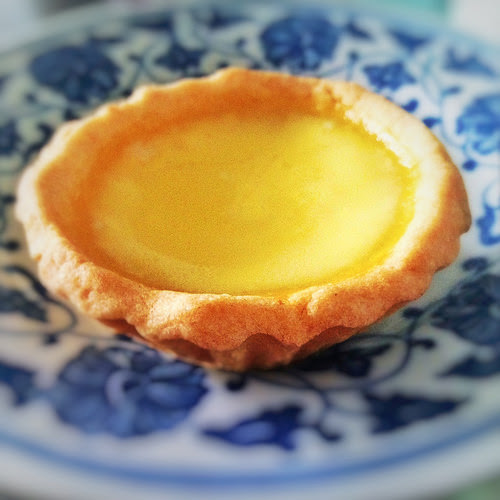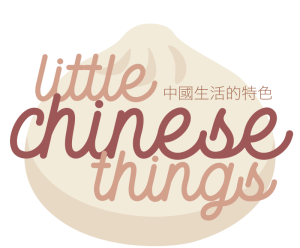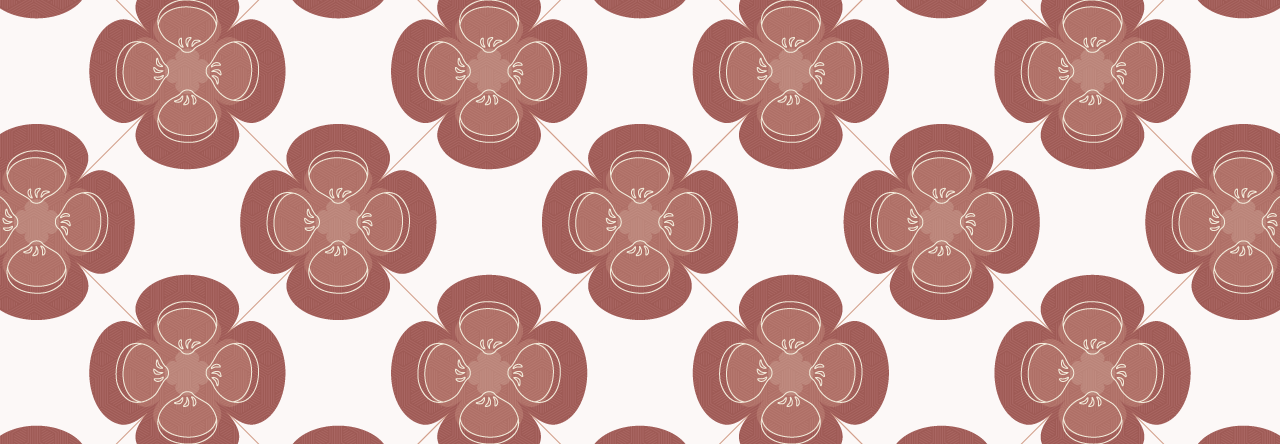Snack options in Hong Kong are diverse and omnipresent — turn any corner and you’re bound to see either a Cantonese bakery, a street-hawker stall, or a cha chaan teng (Hong Kong style diners) peeking out from the streets of boutiques and storefronts. All three spots showcase different facets of Hong Kong dining, but bakeries are one of my favourites: versatile, cheap, quick, and easy. Bakeries are great for on-the-go snack runs, or for stocking up on buns and tarts to last you the next few days.
Hong Kong bakeries serve traditional-styled confections inspired by international flavours. What’s interesting about the continued popularity of Hong Kong baked goods is that it stems from a desire to preserve the traditional. Eliza Woo, communications manager at Wing Wah Bakery (a popular Cantonese style bakery chain), suggests that the idea of “collective memory” motivates people to conserve tradition. In the context of baked goods, this would include traditional methods of baking (such as the tangzhong method), traditional flavours (like stuffings of barbequed pork, pork floss, and egg custard), and traditional offerings (including buut zai gou and bo lo bao).
Hong Kong bakeries serve some of my favourite baked goods, so I’d like to introduce some of the most pervasive breads, cakes, and tarts in the Hong Kong bakery scene! Here’s my (non-exhaustive) guide to the various baked goods you’ll find in a typical Hong Kong bakery:
Breads
Bo Lo Bao (菠蘿包)

Bo lo bao, or pineapple bun, is a Hong Kong pastry staple. Similar to Japanese melon buns (melonpan) and Korean soboro bread (soborobbang), pineapple buns are pillowy and soft with a sweet, flaky topping. Although it doesn’t actually contain any pineapple, this pastry is called a pineapple bun because the bread’s sweet topping crackles when baking and supposedly resembles a pineapple. Sometimes, cafés will serve bo lo yaus, which are bo lo baos with an added slab of butter shoved in its middle. Select bakeries might sell bo lo cheung zai bao (sausage filled pineapple buns), can yuk bo lo bao (luncheon meat filled pineapple buns), cha siu bo lo bao (barbeque pork filled pineapple buns), nai wong bo lo bao (custard filled pineapple buns), and other variations on the basic pineapple bun.
Bo lo baos make great breakfasts — pair yours with a Hong Kong style si mut lai cha (Hong Kong style silk stocking milk tea) or yin yeung (a mix of coffee and Hong Kong style milk tea) for a true Hong Kong breakfast experience!
Cheung Zai Bao (腸仔包)

Cheung zai bao translates literally to “sausage bun”, and is the Cantonese equivalent of an American hotdog. A simple bun composed of a frankfurt sausage wrapped in light, airy, slightly sweet, Hong Kong style bread, cheung zai baos are another Hong Kong favourites, especially as a quick, on-the-go snack. This bun is also one of my childhood favourites. I’d inhale one for breakfast almost everyday — whether I was savouring one while sitting at home and watching TV on a lazy Sunday or running downstairs to catch my bus to school with a bun clenched between my teeth.
Like the bo lo bao, many bakeries sell variations on the basic cheung zai bao. These variations include options topped with salad dressing, spicy sauces, cheese, or even the sweet, pineapple-bun topping (one of my favourite variations — see bo lo bao for more information!).
Gai Mei Bao (雞尾包)

Gai mei baos are small, golden brown, baguette-shaped, sesame-sprinkled buns filled with a mixture of shredded coconut, sugar, and butter. Another misleading name, gai mei bao translates to “cocktail bun” (and more literally to cock’s tail bun — the Chinese word for “cocktail” pairs the words gai, meaning chicken, and mei, meaning tail, for a direct, zero-interpretation translation from the term’s English counterpart).
Gai mei baos are one of my mom’s favourite buns — especially when they’re fresh out of the oven. Everytime we go to a Cantonese bakery, she’ll pick up a gai mei bao or two without fail. Personally, I prefer my coconut-sugar-butter fix in the form of a tart. For more information on coconut tarts, see the ye tat section below!
Yuk Sung Bao (肉鬆包)

Admittedly, I’m not a huge fan of yuk sung baos (pork floss buns), which consist of a plain Hong Kong style bun topped in salad dressing and pork floss — too much plain bread for my taste. Sometimes, pork floss will be added as a filling to the bun itself, in addition to being rolled on top of the bun.
Pork floss (yuk sung) might sound repulsive at first (but trust me, it’s actually pretty good): you might be imagining cotton candy, but made with pork — and honestly, it’s pretty much exactly that. The pork is seasoned with soy sauce and sugar, then cooked and dried and shredded into thin, fluffy strings. It tastes nutty and sweet, with a hint of meatiness — sort of like pork jerky, but floss.
Cakes
Lou Po Beng (老婆餅)

Lou po beng (literally “wife cakes”) are one of my favourite Hong Kong treats: they’re fluffy, flaky pastries filled with sweet winter melon paste. The pastry melts in your mouth but the glutinous filling gives the pastry a slight chew. A commonly told origin story for the lou po beng involves a woman selling herself as a slave for money to heal her sick father-in-law. The woman’s husband decided to sell snacks for money, and created lou po beng using the cheapest ingredients he could find: flour, sugar, lard, and winter melon. Thus, the lou po beng was born!
In addition to lou po beng, you might also see something called lou gong beng (husband cake) in bakeries. Visually similar, lou gong beng serves as the lou po beng’s pastry counterpart. It’s main ingredients are fermented red bean curd, peanuts, five star anise, and the same, flaky pastry as lou po beng.
Bak Tong Gou (白糖糕)

Bak tong gou (white sugar rice cake) doesn’t taste or feel like what you would typically expect from something classified as a cake. Bak tong gou is a steamed rice cake, sweet and light and sometimes a little sour from a fermentation process used when making the batter. It’s made rice flour and sugar, then steamed and cut and served, its internal, honeycomb-like structure exposed. Bak tong gou has a slight chew and springiness to it — imagine mochi, but almost with a crisper mouthfeel; not as chewy and bouncy.
You’ll often find bak tong gou sold by street hawkers located around the hectic Hong Kong streets, in addition to being sold by bakeries. Bak tong gou can also be made with brown sugar, in which case, it would be called hak tong gou (brown sugar rice cake)
Bak tong gou is similar to but zai gou, another rice flour- and sugar-based, street-hawker dessert (see below!).
Buut Zai Gou (砵仔糕)

Buut zai gou (bowl pudding cake) is another steamed rice cake, made with rice flour and sugar. Unlike bak tong gou, buut zai gou has a firmer bite, and is peppered with red beans. It feels more like a pudding than bak tong gou as well — it’s tighter in texture and less fluffy. Buut zai gou can also be made with either white or brown sugar — brown sugar introduces a molasses flavour into the buut zai gou.
Aside from seeing but zai gou in bakeries, you’ll find street-hawkers selling these treats, often alongside bak tong gou, and you might even see it served skewered on two bamboo sticks (like in the TVB dramas!). Buut zai gou is a great snack for when you’ve gotten too hungry roaming the city.
Heung Jiu Gou (香蕉糕)

Heung jiu gou (banana rolls) are glutinous rice rolls flavoured with banana extract, and are another one of my favourite sweet treats. Akin to Japanese mochi and Korean chapssaltteok, heung jiu gou is sweet, sugary, slightly sticky, and insanely satisfying. Heung jiu gou can be filled with red bean paste, a cinnamon swirl, or even diced banana — though I prefer them plain. As a kid, my mom would pick up heung jiu gou from our local bakery as a treat. I would snack on the sweet, chewy tubes, embellished with a red food-colouring swirl, a wide-eyed grin on my face and powdered sugar dusting my lips and chin.
Like other types of mochi and glutinous rice treats, heung jiu gou goes hard when left out for too long. It’s best to eat them fresh for maximum tenderness and ultimate enjoyment.
Tarts
Daan Tat (蛋撻)

You’ve probably heard of daan tats (Hong Kong style egg tarts) before — sweet, creamy, egg-custard filled tarts that crumble and melt in your mouth. These bright, sunshine yellow pastries are loved by Hong Kong and have become iconic in the world of Cantonese baked goods. Daan tats combine Portuguese and British influences. Portuguese colonizers first brought pastel de nata (Portuguese egg tarts) — crisp and caramelized and decadent — to Macau. From Macau, pastel de nata gradually trickled into British Hong Kong, and were modified based on the influence of British custard tarts. This resulted in the smooth, glossy, bright yellow egg tarts we see in Hong Kong today.
Daan tat crusts can be made with either a buttery puff pastry shell or a crumbly, sweet, shortcrust. I prefer the puff pastry option — I think the different textures of the creamy custard filling and the flaky, crisp shell complement each other perfectly. You’ll find daan tat sold in almost every Cantonese bakery, as well as in dim sum restaurants. They taste best fresh out of the oven (or the toaster oven, if you’ve bought them in advance and are reheating them), and they’re a perfect, indulgent treat for any time of day (even breakfast!).
Ye tat (椰撻)

Ye tat (coconut tarts) are little puff pastry- or shortcrust- tarts filled with a fluffy coconut sponge. About the size of a daan tat, ye tats are soft and moist and light and airy. The desiccated coconut gives the tart a slight crunch, and the combination of the crisp pastry crust and the succulent coconut sponge create a party of textures in your mouth. Sometimes, bakeries will add a glacéed cherry to top off the tart — though I tend to go for the plain tarts.
Also like daan tats, ye tats taste best fresh out of the oven, when the warm sponge melts in your mouth and the buttery crust crumbles and flakes on your tongue and the saccharine aroma coats your palate.
I hope you’ve been inspired to try some of these baked goods! If you do, I’d love to hear your thoughts! What are your favourites? What didn’t you like? Let me know in the comments below!


I’ve always had a sweet tooth and pretty much have eaten almost all of the desserts out there in the world, but I’ve never tried any Hong Kong desserts before (which is kind of shocking!). I absolutely loved how informative your post was and I can’t lie but looking at those pictures made me sooo hungry! I definitely want to expand my dessert palette after reading about these yummy desserts and will for sure try some of your recommendations out!
LikeLiked by 1 person
I had the sausage buns a lot when I was growing up! It was something my parents encouraged me to order when we got food from the bakeries in Singapore and Malaysia…to be honest sometimes I got stale buns! I am also not a huge fan of pork floss buns. Don’t get me wrong. I like pork floss (and chicken floss) but not on bread for some reason. Can’t get enough of daan tart at yum cha 🙂 Didn’t get to know and eat coconut tarts until a few years ago actually! It’s one of my favourite Asian/Chinese/HK sweet treats 🙂
LikeLike
Pingback: Hong Kong Cuisine: At The Intersection of Tradition and Innovation – little chinese things
Pingback: Sweet Rice Cake Recipe For Chinese New Year – Haven Hill Cuisine